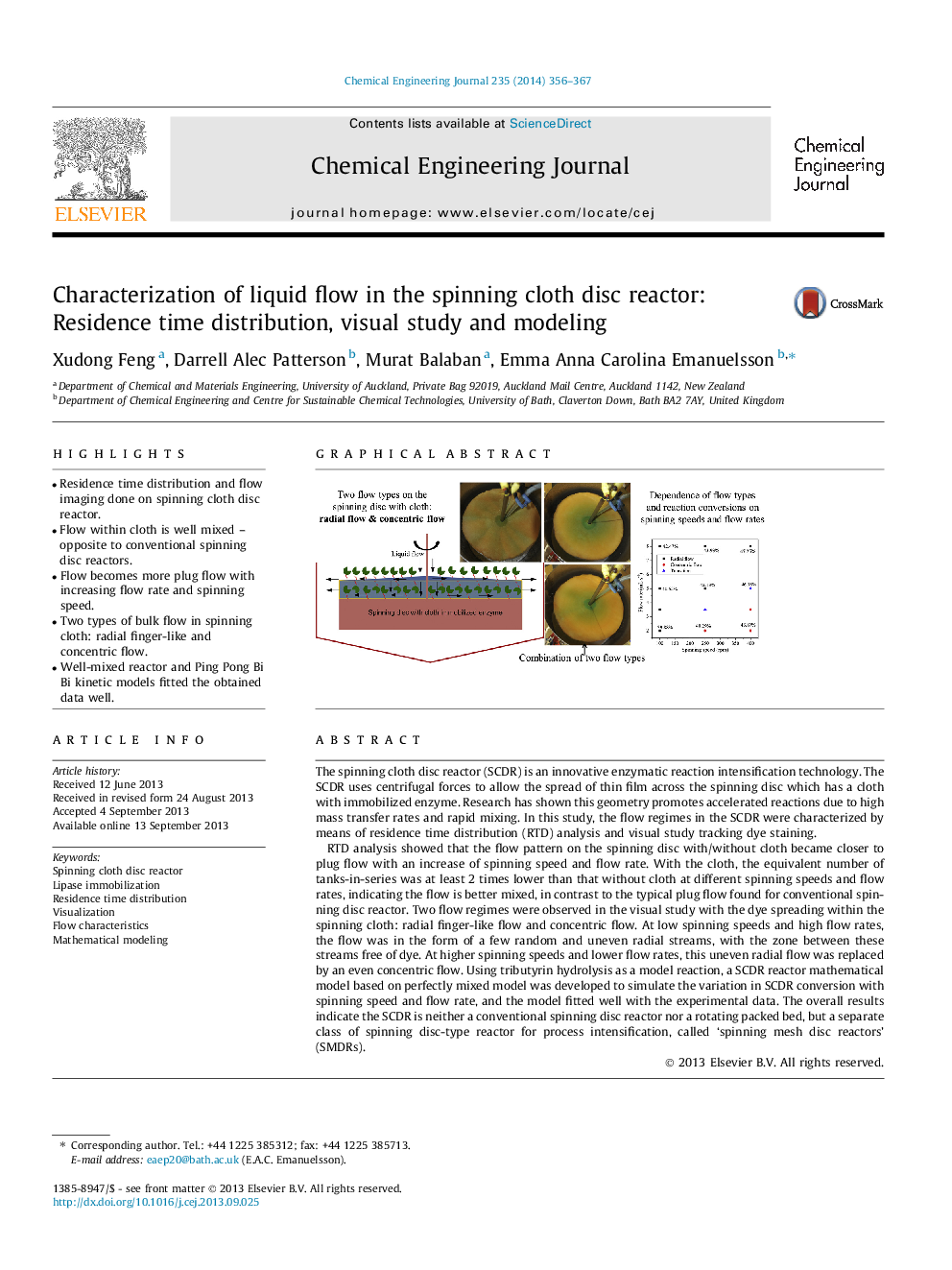| Article ID | Journal | Published Year | Pages | File Type |
|---|---|---|---|---|
| 148348 | Chemical Engineering Journal | 2014 | 12 Pages |
•Residence time distribution and flow imaging done on spinning cloth disc reactor.•Flow within cloth is well mixed – opposite to conventional spinning disc reactors.•Flow becomes more plug flow with increasing flow rate and spinning speed.•Two types of bulk flow in spinning cloth: radial finger-like and concentric flow.•Well-mixed reactor and Ping Pong Bi Bi kinetic models fitted the obtained data well.
The spinning cloth disc reactor (SCDR) is an innovative enzymatic reaction intensification technology. The SCDR uses centrifugal forces to allow the spread of thin film across the spinning disc which has a cloth with immobilized enzyme. Research has shown this geometry promotes accelerated reactions due to high mass transfer rates and rapid mixing. In this study, the flow regimes in the SCDR were characterized by means of residence time distribution (RTD) analysis and visual study tracking dye staining.RTD analysis showed that the flow pattern on the spinning disc with/without cloth became closer to plug flow with an increase of spinning speed and flow rate. With the cloth, the equivalent number of tanks-in-series was at least 2 times lower than that without cloth at different spinning speeds and flow rates, indicating the flow is better mixed, in contrast to the typical plug flow found for conventional spinning disc reactor. Two flow regimes were observed in the visual study with the dye spreading within the spinning cloth: radial finger-like flow and concentric flow. At low spinning speeds and high flow rates, the flow was in the form of a few random and uneven radial streams, with the zone between these streams free of dye. At higher spinning speeds and lower flow rates, this uneven radial flow was replaced by an even concentric flow. Using tributyrin hydrolysis as a model reaction, a SCDR reactor mathematical model based on perfectly mixed model was developed to simulate the variation in SCDR conversion with spinning speed and flow rate, and the model fitted well with the experimental data. The overall results indicate the SCDR is neither a conventional spinning disc reactor nor a rotating packed bed, but a separate class of spinning disc-type reactor for process intensification, called ‘spinning mesh disc reactors’ (SMDRs).
Graphical abstractFigure optionsDownload full-size imageDownload as PowerPoint slide
